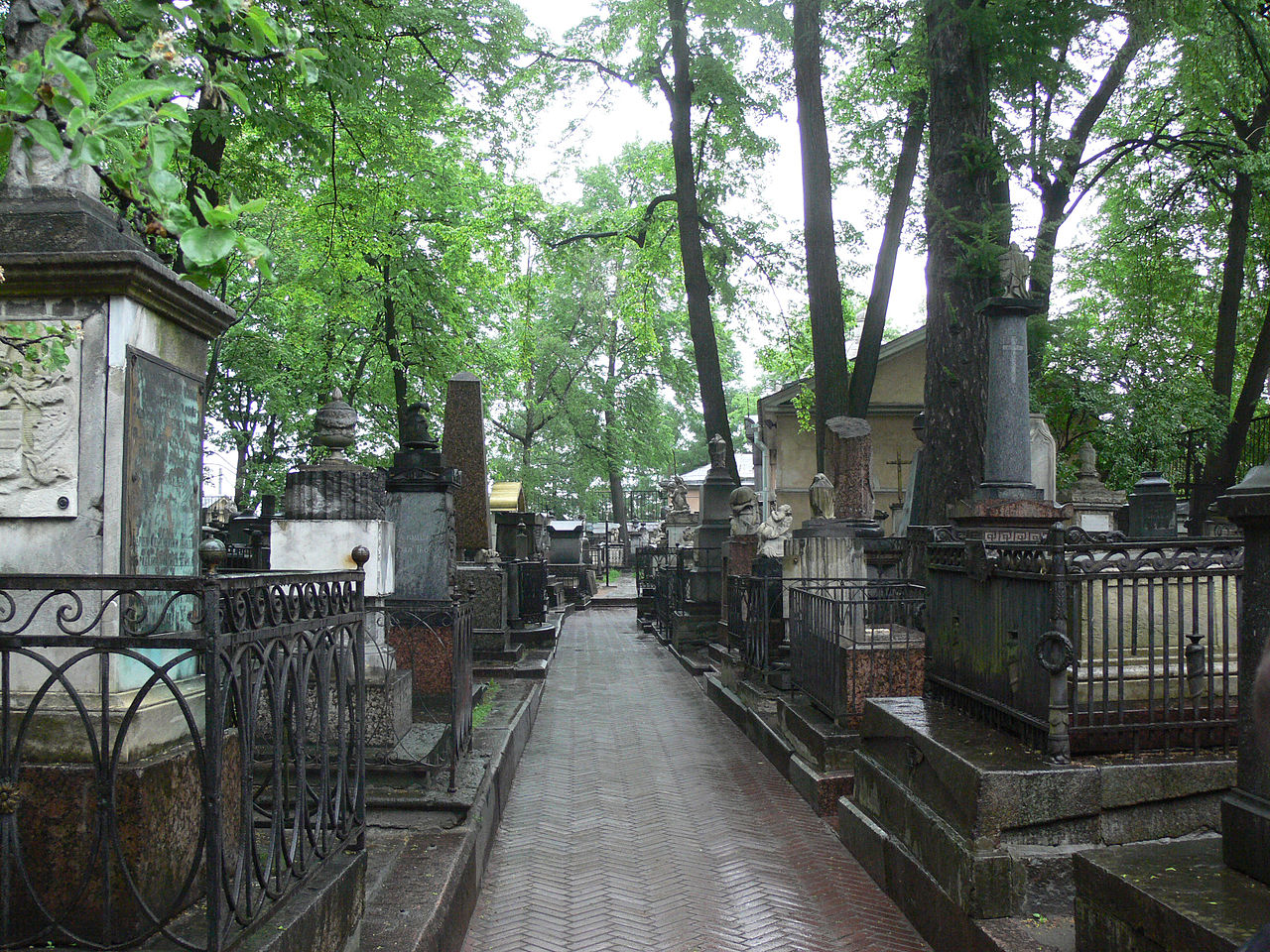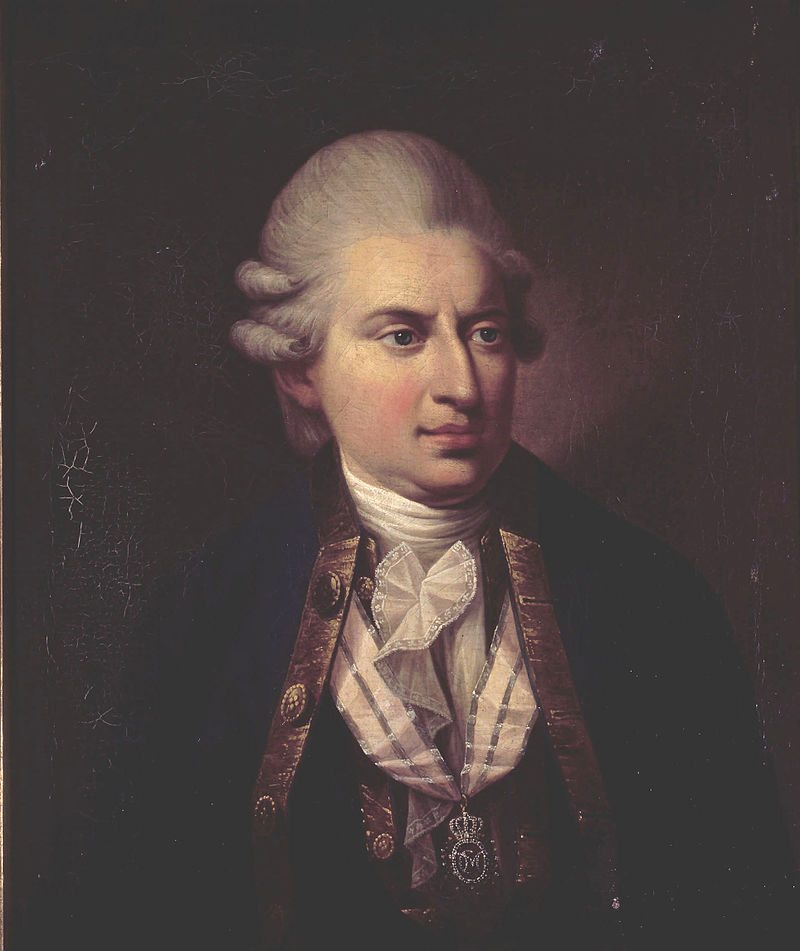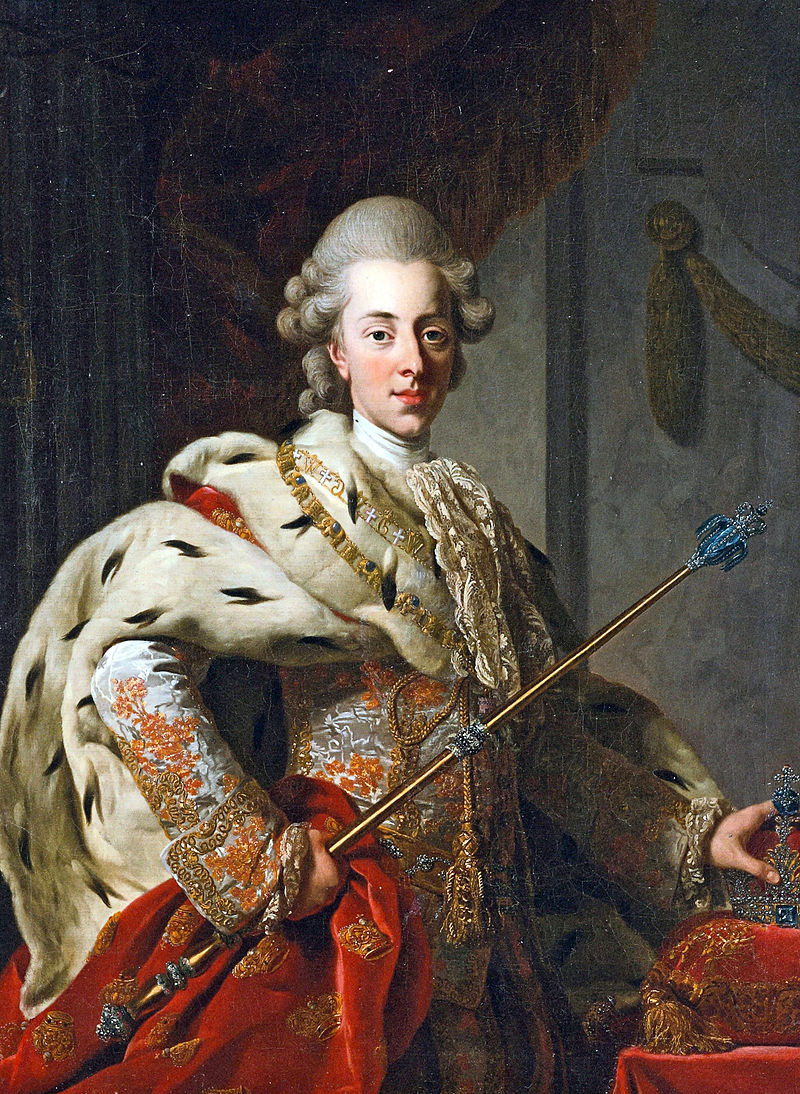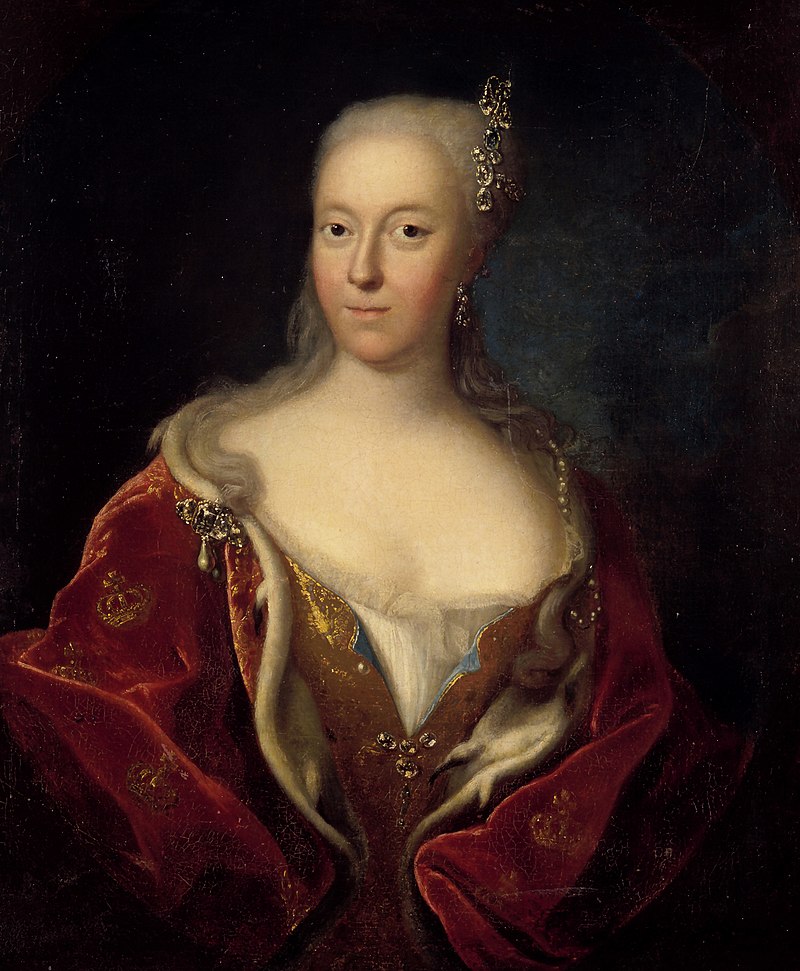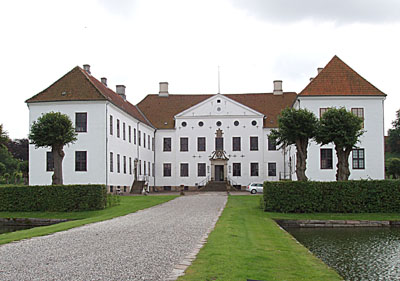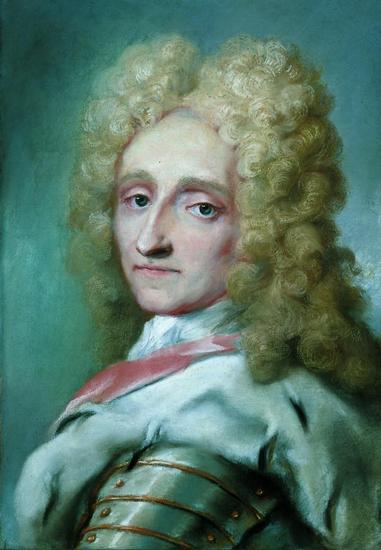by Susan Flantzer © Unofficial Royalty 2020

Prince Albert and Queen Victoria in 1854; Credit – Wikipedia
Victoria is a British television series created by Daisy Goodwin, a British television producer and novelist, and written by Goodwin, Guy Andrews, and Ottilie Wilford for the British television station ITV. It is shown in the United States on PBS (Public Broadcasting Service) on its Masterpiece, the long-running weekly drama series that features British productions.
Sorry for the long delay in writing and publishing this article. Victoria Season 3 aired in the United States on PBS (Public Broadcasting Service) from January 31, 2019 – March 3, 2019. My husband and I DVR everything we watch on television – even PBS shows that do not have commercials – and so I set my DVR to record the eight episodes of Victoria Season 3. And then I saw some reviews and heard from people who had seen it. Then it began airing in the United Kingdom on March 24, 2019, and I read articles about it in the British media. None of what I found out about Series 3 made me want to watch it.
I also noticed that Unofficial Royalty’s article on Queen Victoria’s dresser Marianne Skerrett (NOT NANCY SKERRETT!) was getting a lot of views so I knew something was up with her in Season 3. As of the date this article was published, Marianne Skerrett’s article has had 54,605 views – Unofficial Royalty’s fifth most viewed article and the second most viewed biography article – and she isn’t even a royal.
I had noticed when Season 2 was airing, a lot of people viewed Unofficial Royalty’s article about Ernst II, Duke of Saxe-Coburg and Gotha, Prince Albert’s brother. Ernst’s article has 60,990 views, is the fourth most viewed article, and is the most viewed biography article. At that time of the airing of Season 2, I wondered what they had Ernst doing in Season 2 – probably the same inaccurate things he had been doing in Season 1. What they had Ernst doing (and what they had many other characters – or should I say real people – doing) never happened. In Season 3, real people were still doing things that never occurred along with a lot of fabrication involving people who never existed.
And so, I procrastinated watching Victoria Season 3 and it languished on my DVR occupying eight hours of space until the coronavirus pandemic came around and I figured that it was as good a time as any to get that eight hours of DVR space back.

Mediaeval Baebes in concert; Credit – By https://www.flickr.com/photos/sfllaw/ – https://www.flickr.com/photos/sfllaw/47623647/, CC BY-SA 2.0, https://commons.wikimedia.org/w/index.php?curid=7065649
I have to honestly say that the best thing about watching Victoria Season 3 was hearing the Mediaeval Baebes sing the title theme eight times. The Mediaeval Baebes are a British musical ensemble that performs traditional medieval songs and poetry set to music and some original compositions. They sing in a variety of languages and their vocals are backed by medieval instruments played by the singers or fellow musicians. My husband and I are fans of the Mediaeval Baebes. We first heard them years ago while listening to the Rutgers University radio station in the car. That Christmas we bought each other a Mediaeval Baebes CD – luckily they were different CDs. In 2018, the Mediaeval Baebes did a US tour and we were able to attend a concert. Among the songs performed in the concert was the title theme to Victoria – which is longer than it is on the show. We bought their latest CD at the concert (which has the Victoria theme on it) and they all signed the CD and we got to speak with them.
I wanted to include here a YouTube video of the Mediaeval Baebes singing the Victoria theme but there is only an audio YouTube video. I am guessing it is because of copyright issues. The music was composed by Martin Phipps and he holds the copyright. You can listen to the Victoria – The Suite at this link YouTube – Victoria – The Suite and this is the official website of the Mediaeval Baebes: https://www.mediaevalbaebes.com/ Check it out!
Will there be a Victoria Season 4? According to the website for PBS (Public Broadcasting Service), “The series is currently on hiatus, and unfortunately, we don’t have any additional information to share at this time.”
We encourage our readers to learn more about Queen Victoria and her family. You can start right here at Unofficial Royalty. See the links below. Read some books. You will find lots of suggestions in the bibliography listed first.
Now let’s get on with What’s Wrong with “Victoria” Season 3. I have no major issues with what went on between Victoria and Albert. They certainly were known to have their differences during their marriage. The parts of Victoria Season 3 that made me want to SCREAM deal with Queen Victoria’s half-sister Princess Feodora (utterly false story), the Duke and Duchess of Monmouth (they did not exist), and Nancy Skerrett (her name was Marianne, she was 26 years older than Queen Victoria and she did not die of cholera) and Charles Elmé Francatelli (he worked at the palace only from 1840 – 1842 and did not marry Marianne Skerrett).
There are a few picky issues that I’ll get to at the end of the article along with some thoughts on Prince Albert’s hair, but first a timetable.
*********************
Timetable
Victoria Season Three started around the time of Princess Louise’s birth and ended after the opening of the Great Exhibition which would be 1848 – 1851. For the most part, historical events occurred around the correct time except for the cholera outbreak which occurred in 1854. Also included below is the tenure of real people in their positions who were characters in Season 3.
- 1837 – 1862 – Marianne Skerrett was Wardrobe Woman and then Head Dresser to Queen Victoria
- 1840 – 1842 – Charles Elmé Francatelli worked at the palace as Maitre d’Hôtel and Chief Cook
- June 30, 1846 – February 21, 1852 – Lord John Russell, after 1861 1st Earl Russell, was Prime Minister of the United Kingdom. He also served as Prime Minister from 1865 – 1866.
- July 6, 1846 – December 26, 1851 – Henry John Temple, 3rd Viscount Palmerston was the Foreign Minister of the United Kingdom. He served in the British Cabinet in other posts and was Prime Minister of the United Kingdom twice from 1855 – 1858 and from 1859 – 1865.
- February 23, 1848 to early 1849 – Revolutions of 1848
- March 18, 1848 – Princess Louise, the fourth of the five daughters and sixth child of the nine children of Queen Victoria and Prince Albert, was born at Buckingham Palace
- April 8, 1848 – Queen Victoria, Prince Albert, and their family go to Osborne House because of the possible danger due to the Chartist protests.
- April 10, 1848 – Chartist Convention organized a mass meeting on Kennington Common in London, which would form a procession to present a petition to Parliament
- May 1, 1850 – Prince Arthur, the third of the four sons and the seventh of the nine children of Queen Victoria and Prince Albert, was born at Buckingham Palace
- May 1, 1851 – October 15, 1851 – Great Exhibition was open
- 1854 – Broad Street cholera outbreak
*********************
Feodora of Leiningen, Princess of Hohenlohe-Langenburg

Feodora of Leiningen, Princess of Hohenlohe-Langenburg in 1854; Credit – Wikipedia
Victoria Season 3 would have the viewer believe that Queen Victoria’s half-sister Feodora of Leiningen, Princess of Hohenlohe-Langenburg spent more than two years living in England and was a scheming, jealous person. This is ridiculous and false.
Queen Victoria had two elder half-siblings from the first marriage of her mother Princess Victoire of Saxe-Coburg-Saalfeld and Emich Carl, 2nd Prince of Leiningen: Karl, 3rd Prince of Leiningen (1804 – 1856) and Princess Feodora of Leiningen (1807 – 1872). Feodora was twelve years older than Victoria.
In 1814, at the age of ten, Karl became Prince of Leiningen upon his father’s death. However, in 1806, the Principality of Leiningen had been mediatized – annexed to another state(s), while allowing certain rights to its former sovereign. The Principality of Leiningen ceased to exist and was divided between the Grand Duchy of Baden, the Kingdom of Bavaria, and the Grand Duchy of Hesse and by Rhine. The family retained Amorbach Abbey in Amorbach, Kingdom of Bavaria, now in the German state of Bavaria and it remains the family seat of the Princely Family of Leiningen. Karl, who was fifteen years older than Victoria, had less of a presence in his half-sister’s life as he was educated abroad and spent time at Amorbach Abbey.
Karl and Feodora’s father died in 1814 and their mother married Prince Edward, Duke of Kent, the fourth son of King George III, in 1818. The Duke and Duchess of Kent’s only child, the future Queen Victoria, was born on May 24, 1819. Victoria was only eight months old when her father died on January 23, 1820, just six days before his father, King George III died.
After King George III’s death, the infant Victoria was third in the line of succession after her uncles, Frederick, Duke of York and William, Duke of Clarence. Neither the new king, George IV, nor his brothers Frederick and William had any heirs, and the Duchess of Kent decided she would take a chance on Victoria’s accession to the throne. The Duchess decided to stay in England rather than return to her homeland.
Feodora shared Victoria’s relatively isolated existence at Kensington Palace. Feodora was educated privately under the direction of her governess, Louise Lehzen, who would later become governess, confidante, and companion to the young Victoria. Feodora, too, was a close companion and devoted to her sister, and the two would maintain a close relationship for the rest of Feodora’s life.
In Victoria Season 3, Feodora claims that King George IV, Victoria’s paternal uncle, wanted to marry her. There is no historical evidence that this occurred. Stifled by her restricted life within Kensington Palace, Feodora was very eager to find a husband and move away. In 1828, Feodora married Ernst I, 4th Prince of Hohenlohe-Langenburg at Kensington Palace, despite having only met him twice before the wedding. After her sister married, nine-year-old Victoria wrote in her journal that she missed Feodora, “for she used to come into my room very often in the day, and used to sit very often in my room writing her letters… and she was always so gay and cheerful.”
Feodora’s husband Ernst I, 4th Prince of Hohenlohe-Langenburg, like her brother, had a title but had no land to reign over. In 1806, the Principality of Hohenlohe-Langenburg had been mediatized to the Kingdom of Württemberg. Ernst held several political positions in the Kingdom of Württemberg and was one of the most influential men in the kingdom. The couple lived in a castle in Langenburg where they raised their six children. Feodora’s daughter Adelheid (the “Heidi” in Victoria Season 3) married Friedrich VIII, Duke of Schleswig-Holstein. Adelheid and Friedrich’s daughter Augusta Victoria of Schleswig-Holstein married Wilhelm II, German Emperor, King of Prussia, son of Victoria’s eldest child Victoria, Princess Royal. And so, Feodora’s granddaughter married Victoria’s grandson. Through this marriage, Feodora and her daughter Adelheid are ancestors of the Greek and Spanish royal families.
Victoria and Feodora wrote to each other religiously. Victoria and her mother visited Feodora and Feodora did visit Victoria and their mother in England. Whenever she came, Victoria paid Feodora £300 for her expenses. Most importantly, Feodora came to England when Victoria needed her the most, in the summer of 1861 following the death of their mother and then in December 1861 following Prince Albert’s death.
Following a serious illness, Princess Feodora, aged 64, died on September 23, 1872. After getting a telegram informing her of Feodora’s death, Victoria wrote in her journal: “Can I write it? My own darling, only sister, my dear excellent, noble Feodora is no more!… I stand so alone now, no near & dear one nearer my own age, or older, to whom I could look up to, left! All, all gone! How good & wise, beloved Feodora was, so devoted to me, so truly pious & religious. She is gone to that world she was so fit for & entered it, just sleeping away. What a blessed end! but what a loss to those who are left! She was my last near relative on an equality with me, the last link with my childhood & youth.”
A copy of a letter dated 1854 (shortly after the time period of Victoria Season 3) sent to Victoria was found among Feodora’s papers after her death: “I can never thank you enough for all you have done for me, for your great love and tender affection. These feelings cannot die, they must and will live in my soul – till we meet again, never more to be separated – and you will not forget.”
The sentiments above in Victoria’s journal and in Feodora’s letter sound like they are coming from sisters who truly loved each other.
*********************
Marianne Skerrett and Charles Elmé Francatelli
No, they did not get married! No, Marianne (NOT NANCY!) did not die from cholera! The portrayals of Marianne Skerrett and Charles Elmé Francatelli in Victoria disturb me the most. They are not well-known but they were real people whose actual life stories were turned upside-down and inside-out.
Marianne Skerrett (1793 – 1887) was the Head Dresser and Wardrobe-Woman to Queen Victoria from 1837 to 1862. The daughter of a British Army officer who owned a plantation in the West Indies, Marianne was born in 1793, so she was 44-years-old when Victoria became queen. She was extremely well-read and was fluent in Danish, French, and German.
Author Carolly Erickson has references to Marianne in her biography of Queen Victoria, Her Little Majesty. From Erickson’s book: Marianne Skerrett was “the head of Victoria’s wardrobe, overseeing all the practical work of ordering all her clothing, shoes, hats, gloves, and undergarments…She kept the wardrobe accounts, checking all the bills to make certain no one tried to cheat her mistress, and supervised the purveyors, hairdressers, dressmakers, and pearl-sewers whose task it was to keep the royal wardrobe in good repair.”
In addition, Marianne and Victoria had a lot in common. From Erickson’s book: “Both were intelligent, loved animals, spoke several languages…shared a great interest in paintings and painters. Marianne was well educated, with cultivated tastes, and in time to come Victoria would rely on her to help with the purchase of paintings and in corresponding with artists.”
Although she retired in 1862, Marianne remained in contact with Queen Victoria until her death in 1887 at the age of 94.

Charles Elmé Francatelli, drawn by Auguste Hervieu and engraved by Samuel Freeman, 1846; Credit – Wikipedia
Charles Elmé Francatelli (1805 – 1876) was born in London, England. He was educated in France at the Parisian College of Cooking where he studied culinary arts with Antonin Carême, known as “The King of Chefs and the Chef of Kings.” When Francatelli returned to England, he became chef de cuisine (executive chef) to several members of the nobility. He then became chef de cuisine at the St. James’s Club, popularly known as Crockford’s.
For two years only, from March 9, 1840 to March 31, 1842, Francatelli served as maitre d’hôtel and chief cook in ordinary to Queen Victoria. For some reason, he was dismissed, perhaps because Queen Victoria did not like his French cuisine, and he returned to Crockford’s. Francatelli did have one more royal client. For a short period in the 1860s, he served as chef de cuisine to The Prince and Princess of Wales (the future King Edward VII and Queen Alexandra) at their London home, Marlborough House.
During his career, Francatelli was chef de cuisine at the Coventry House Club and the Reform Club. Afterward, he managed the St. James’s Hotel in Piccadilly London and finally the Freemasons’ Tavern, a position he held until shortly before his death.
Francatelli was a very successful cookbook author. In 1845, he published The Modern Cook which ran through twelve editions. His next book was The Cook’s Guide and Butler’s Assistant published in 1861. The same year, he published Plain Cookery Book for the Working Classes which contained practical information valuable to the less affluent people. In 1862, The Royal English and Foreign Confectionery Book was published.
Francatelli did marry twice (but not to Marianne Skerrett) and did have children. He died in Eastbourne, England on August 10, 1876, at the age of 71.
*********************
The Duke and Duchess of Monmouth

James Scott, the only real Duke of Monmouth; Credit – Wikipedia
Charles, Duke of Monmouth and Sophie, Duchess of Monmouth, supposedly Mistress of the Robes, are totally fictional and in my opinion, an unnecessary soap-opera-like narrative in Season 3.
The peerage Duke of Monmouth was created only once and that was during the reign of King Charles II. In 1663, Charles II created his eldest illegitimate child 14-year-old James, the son of Lucy Walter, Duke of Monmouth. James married Anne Scott who was the 4th Countess of Buccleuch in her own right. On their wedding day, the couple was created 1st Duke and 1st Duchess of Buccleuch. Thereafter, James used Scott as his surname but was usually called Monmouth. The couple had seven children and Sarah, Duchess of York (the great-great-granddaughter of the 6th Duke of Buccleuch) and her daughters Princess Beatrice and Princess Eugenie, and Princess Alice, Duchess of Gloucester (born Lady Alice Montagu-Douglas-Scott, the daughter of the 7th Duke of Buccleuch) and her son Prince Richard, Duke of Gloucester are among their descendants.

Anne Scott, the only real Duchess of Monmouth with her sons; Credit – Wikipedia
When King Charles II died without a legitimate heir on February 6, 1685, his brother and the Duke of Monmouth’s uncle succeeded to the throne as King James II. James, Duke of Monmouth thought he has a claim to the throne and planned an invasion of England and Scotland. On July 6, 1685, the armies of uncle and nephew met at the Battle of Sedgemoor where the army of James, Duke of Monmouth was defeated.
James, Duke of Monmouth had previously been attainted of treason by Parliament on June 16, 1685, and was to “suffer Paines of Death and Incurr all Forfeitures as a Traitor Convicted and Attainted of High Treason.” He was sent to the Tower of London and beheaded on Tower Hill on July 15, 1685.
The Act of Attainder forfeited his English peerages including the Duke of Monmouth, but his Scottish peerages including the Duke of Buccleuch were not affected and continued to be held by his widow and their descendants. Since 1685, there has never been another Duke of Monmouth.

Harriet Sutherland-Leveson-Gower, Duchess of Sutherland, the real Mistress of the Robes during the time period covered in Season 3; Credit – Wikipedia
Harriet Sutherland-Leveson-Gower, Duchess of Sutherland was the Mistress of the Robes during the period covered in Season 3, serving 1846–1852. She also served as Mistress of the Robes during 1837–1841, 1853–1858, and 1859–1861.
*********************
A Few Picky Issues

Lord Palmerston in 1855, not exactly the dashing, young Lord Palmerston of Season 3; Credit – Wikipedia
Henry John Temple, 3rd Viscount Palmerston, Foreign Secretary was portrayed by Laurence Fox (born 1978), who I very much liked in the role of Detective Sergeant James Hathaway in the British television series Inspector Lewis, a sequel to the Inspector Morse series. Palmerston was born in 1784 and so in 1848 when Series 3 started, he was 64-years-old and not the dashing, young Palmerston as portrayed by Laurence Fox, in his early 40s. Palmerston did have a reputation as a womanizer and was nicknamed “Cupid,” but I don’t know if he was running around the halls of palaces, sneaking in ladies’ rooms in his 60s – so why not take twenty years off his real age and make up some stories – which is what happened in Season 3. His wife, born The Honorable Elizabeth Lamb, was the sister of William Lamb, 2nd Viscount Melbourne, Queen Victoria’s first Prime Minister, and had a long-term affair with Palmerston during her first marriage.
*********************

Adelheid of Hohenlohe-Langnburg – Season 3 tried to marry her off to a non-existent prince; Credit – Wikipedia
Prince Sigmund of Prussia? No, you are not slipping this one past me! In Series 3, it was said that Feodora’s daughter Adelheid (called Heidi in the show) may marry Prince Sigmund of Prussia, the brother of the King of Prussia, The King of Prussia during the time period of Victoria Season 3 was King Friedrich Wilhelm IV. He had three brothers and none of them was named Sigmund. In fact, no King of Prussia had a brother named Prince Sigmund.
Wilhelm II, German Emperor and King of Prussia had a brother named Prince Sigismund but he was born in 1864 and died in 1866. Prince Heinrich of Prussia, Wilhelm II’s brother, had a son named Prince Sigismund but he wasn’t born until 1896. So let’s just make up a fictional prince and say he was a suitor of Princess Feodora’s daughter!
*********************
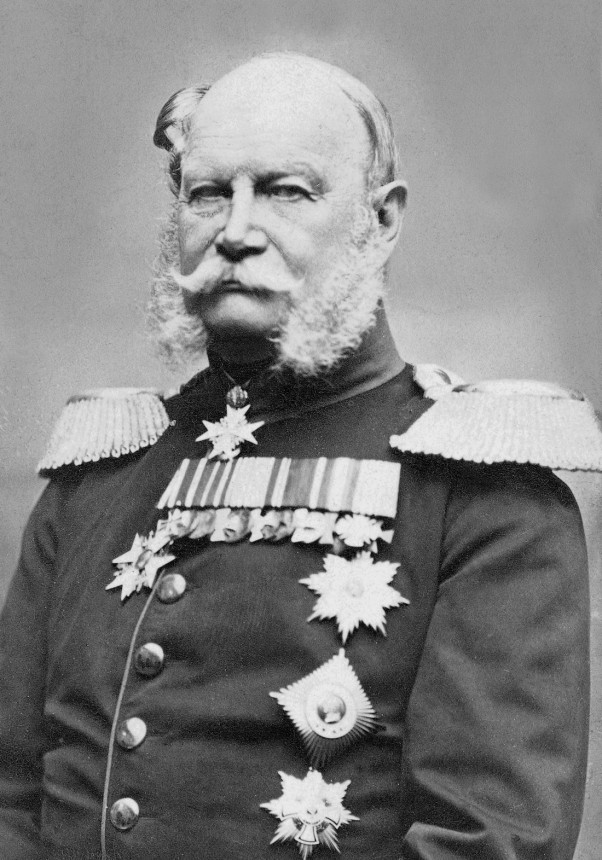
In 1851, this was the Crown Prince of Prussia; Credit – Wikipedia
In the same conversation as “Prince Sigmund,” it was said that Vicky, Queen Victoria’s eldest child, would marry the Crown Prince of Prussia. It was 1851 and the Crown Prince of Prussia was 54-year-old Wilhelm, the brother of the childless King Friedrich Wilhelm IV. Wilhelm succeeded his brother in 1861 as King Wilhelm I of Prussia. Wilhelm was also already married and had a son and a daughter. The son was the future Friedrich III, German Emperor and King of Prussia. He was the one that Vicky married in 1858 but he would not be Crown Prince of Prussia until his father succeeded to the throne in 1861. When Vicky married him he was Prince Friedrich of Prussia. So in 1851, the correct thing to say would have been “Vicky will marry the son of the Crown Prince of Prussia” but I guess the viewers were not considered smart enough to deal with that so let’s just use something else that is inaccurate.
*********************
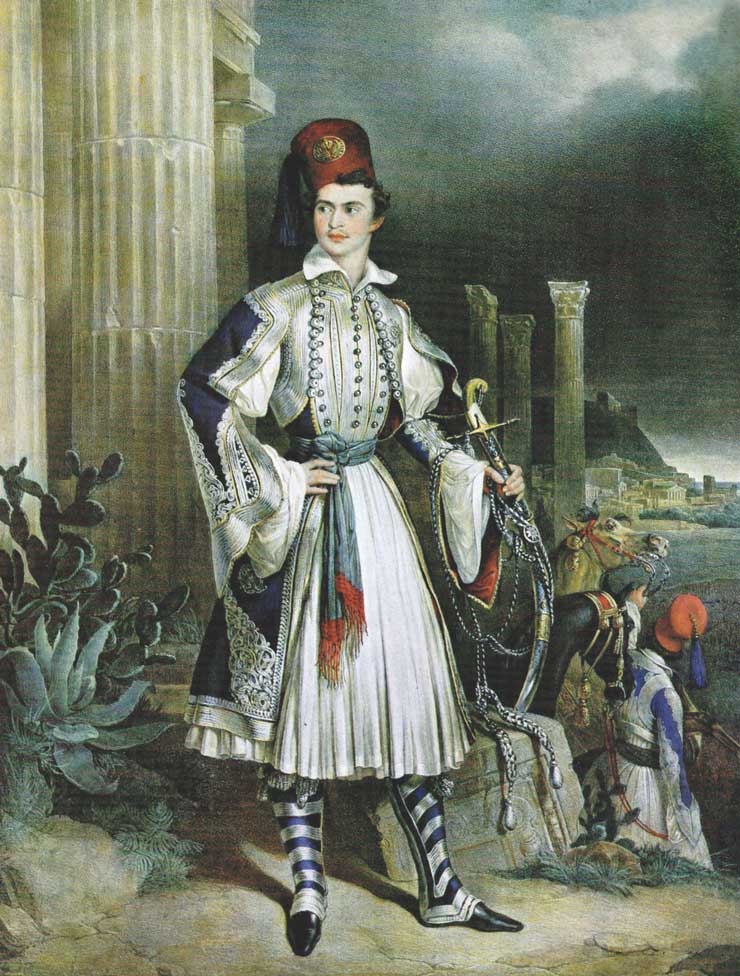
King Otto of Greece – Not Albert’s cousin; Credit – Wikipedia
In Season 3, it was said that King Otto of Greece was Prince Albert’s cousin. Um, no! Not even close! I did a double-take when I heard that. King Otto of Greece was born Prince Otto of Bavaria, the son of Ludwig I, King of Bavaria and Princess Therese of Saxe-Hildburghausen. In 1832, the Convention of London established Greece as a kingdom, and the Great Powers appointed Otto to be the new kingdom’s first king. He reigned for thirty years, until 1862 when he was deposed by a coup.
According to the relationship calculator at Leo’s Genealogics Website, the only way Otto is related to Albert is through Albert’s marriage to Victoria. King Otto of Greece (born Prince Otto of Bavaria) is the second cousin once removed of Queen Victoria, Prince Albert’s wife. Otto and Victoria’s mutual ancestors are Karl, Duke of Mecklenburg-Strelitz and Princess Elisabeth Albertine of Saxe-Hildburghausen. They are Queen Victoria’s great-grandparents through her paternal grandmother Charlotte of Mecklenburg-Strelitz (wife of King George III) and Otto’s great-great-grandparents through his mother.
*********************
Some Thoughts on Prince Albert’s Hair
In Season 3, Prince Albert ranges in age from 29 to 32. Albert, as played by Tom Hughes, has been wearing his hair the same way since he first appeared in the series as a teenager. Perhaps the idea for Hughes’ hairstyle came from the portrait of Albert below by Franz Xaver Winterhalter. The painting is from 1842 when Albert was 23-year-old.

Credit – Wikipedia
Albert began to suffer from a receding hairline early in his marriage. Quite a few of Albert’s descendants had early receding hairlines including his great-great-grandsons Prince Philip, Duke of Edinburgh and Prince Edward, Duke of Kent, his great-great-great-grandson Prince Edward, Earl of Wessex and his great-great-great-great-grandsons Prince William, Prince of Wales and Prince Harry, Duke of Sussex. By 1848, the first year of Victoria Season 3, Albert was 29-years-old and had far less hair. In the early daguerreotype with hand-coloring from 1848 below, Albert’s hairline is receding.

Credit – Wikipedia
And yet here is Albert, Victoria, and their son Bertie below at Osborne House in Season 3 at the same age (or even older) as Albert above, still sporting his teenage hairstyle with no evidence of a receding hairline.
In the 1850s, Albert’s hairline continued receding. Below is a photo of Victoria and Albert in 1854, only two years after the time period of Season 3.

Credit – Wikipedia
Below is Albert, aged 42, in 1861, the year of his death. If Victoria makes it to Albert’s death and he dies with a head of hair like Tom Hughes above, you will hear me SCREAM! from wherever you are!

Credit – Wikipedia
This article is the intellectual property of Unofficial Royalty and is NOT TO BE COPIED, EDITED, OR POSTED IN ANY FORM ON ANOTHER WEBSITE under any circumstances. It is permissible to use a link that directs to Unofficial Royalty.









